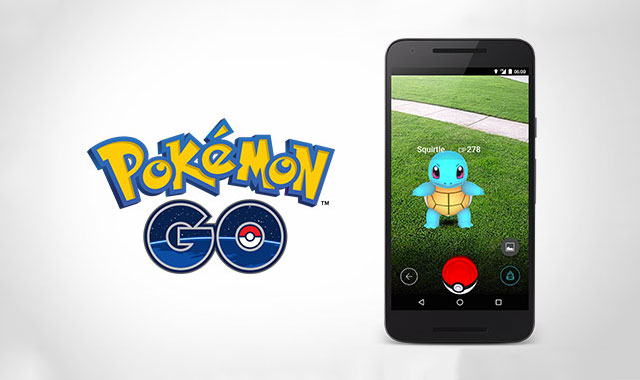
In 2014, as part of its traditional April Fool’s pranks, Google released a video in which Google Maps vice-president Brian McClendon announced a job opening for a Pokémon Master.
The video showed candidates travelling around the world, from the tallest mountains to the middle of the ocean in their search for the rarest creatures. Instead of pokéballs, they used their phones to capture them.
Fast-forward two years and the video that started as a tongue-in-cheek prank became reality with the release of Pokémon Go, a free-to-play mobile game that enables players to capture Pokémon through the magic of augmented reality.
The Pokémon franchise started in 1996 as titles for the Nintendo Game Boy and has since expanded into seven generations of successful games, films, toys and trading cards.
In these games, players explore a fictional world capturing wild Pokémon — Po-c-ke-t Mon-sters with special powers — which they can use to battle and trade with other players.
Pokémon Go adapts many of the mechanics of its predecessors into a new medium. Similarly to previous games, players control an avatar and must find, capture and battle Pokémon.
But in the new game, the creatures are hiding in the real world around us and must be discovered by physically walking to specific spots in the city.
The game uses an augmented reality interface that overlays the 3D digital content of the game onto the phone’s camera feed. This way, the smartphone acts as a magic lens through which players can see their Pokémon as if they were in physical space.
Exciting features planned for the future include the capability to trade Pokémon with other players and the Pokémon Go Plus, a Bluetooth low-energy wearable device that notifies players when there are creatures nearby.
Location, location, location
Similar games have been extensively studied in academic research. Technically, Pokémon Go is a type of pervasive game, lying at the intersection between location-based gaming and augmented reality gaming.
Pervasive games are those that blur the line between the physical world and the game world. Location-based games are aware of players’ geographical positions and adapt the gameplay to their context.
They often rely on technologies such as GPS and Wi-Fi signals to pinpoint players’ locations and combine this information with metadata about nearby services and landmarks.
Augmented reality games blend digital content into the real world, either with a projector (Microsoft’s RoomAlive turns any room into an augmented space) or by rendering graphics onto the video feed from a camera (PlayStation’s Wonderbook: Book of Spells creates a magical experience around a physical book).
Though games similar to Pokémon Go already existed with moderate success, only the power of a popular franchise like Pokémon could bring them into the mainstream.
The game was developed by Niantic, a Google spin-off with previous success in location-based mobile games, and quickly skyrocketed to the top of the download charts.
Within a day of its release last week, the app topped iTunes charts and bumped up Nintendo’s share prices.
The game was initially launched only in Australia and New Zealand, following on to the US, but eager players elsewhere have found workarounds for these location limitations.
Warning! Wild Pokémon in the area
As with any piece of software, the game did ship with its own technical issues, such as bugs, glitches and server connection problems, but these are likely to be solved as updates and patches are rolled out.
Other problems are inherent to the technologies it uses. Due to the long time the screen has to be on, combined with intense use of the camera, 3D rendering and GPS, a Pokémon hunt can quickly drain your phone’s battery.
But because it is an inherently social and outdoors game, it also presents a whole new category of problems. The game requires players to walk around while dividing their attention between the phone and their surroundings, so it increases the risk of injury.
Several features of the app are location-dependent, requiring players to be physically present at that location to trigger a game event. Whereas most of the time this offers players an opportunity to explore and discover new spots in their cities, it also creates awkward situations.
A police station in Darwin was tagged as a PokéStop (a landmark where players can get resources to capture more Pokémon), causing officers to publish a warning on their Facebook page that it was not necessary to actually enter the building to obtain in-game benefits.
The way in which the game tags important locations has also caused problems for the unlucky owners of properties inadvertently designated as in-game “gyms”, causing players to trespass and loiter.
In its choice of city landmarks, the game’s algorithm often chooses delicate or inappropriate locations. We compiled the Tumblr page PokéMorbid with a series of examples, including war memorials and mausoleums tagged as “gyms”, and Pokémon suddenly appearing at funerals and hospitals.
Even more sinister events have been reported in the media. In Wyoming, a teenager playing the game stumbled upon a dead body floating in a river and in Missouri, armed robbers used the app to lure victims into a trap.
Games for the next generation
Despite the hiccups along the way, Pokémon Go has successfully brought pervasive gaming into the mainstream. Whereas it is unlikely that we will start seeing pervasive versions of every beloved game from our childhoods, this game really highlights the potential for this technology.
Upcoming augmented reality headsets such as the Microsoft Hololens have the potential to make such games even more immersive.
In the meantime, we can enjoy rediscovering our cities while we “catch ‘em all”. Just be careful not bump into tree as you try to capture that Pikachu.![]()
- Eduardo Velloso is research fellow, Microsoft Research Centre for Social Natural User Interfaces, University of Melbourne, and Marcus Carter is SocialNUI research fellow, University of Melbourne
- This article was originally published on The Conversation

